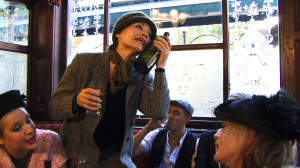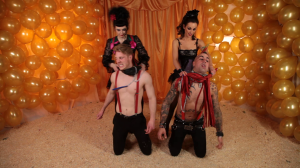On Thursday 22nd January, Upstairs at the Ritzy played host to a double bill of films from London theatre director and filmmaker Chris Ward. Presented under the banner of his theatre company ‘Wet Paint’, What Shall We Do With A Drunken Sailor and Camberwell Beauty hit the Brixton cinema’s screens. Arts contributor Adam Marshall went along.

Despite his theatrical awakening being firmly rooted in the anarchistic playground of the punk movement, the social viewpoint manifesting in Chris Ward’s two short films seems surprisingly current.
The first, What Shall We Do With a Drunken Sailor, is a passion project about the so-named Queen of Bohemia, Nina Hamnett. It’s not difficult to understand Ward’s affection for the charismatic Hamnett, whose CV lists a range of credits – artist, writer, raconteur, lush, contemporary of Ezra Pound’s in 1910s Paris, and the taker of innumerable lovers.

Set in the late 1930s, the film sees Hamnett, played by Siobhan Fahey (of Bananarama and Shakespears Sister fame), struggling to cope with a London that’s transforming around her. Like an urban Blanche DuBois, she’s good for little more than a raunchy anecdote and a cheap lay; her colourful attitude, attire and language barely conceal her falling star.
Running at nearly an hour, Camberwell Beauty allows Ward more space to experiment with both form and theme. Netta, the lead singer of an early 80s punk band, is alienated from her contemporaries when the plastic surgery she’s given after an accident makes her face beautiful.

You’ll either love or hate Ward’s style, which is a tableau of London’s subversive scene: boxing burlesque girls, reveling transvestites, old-fashioned knees ups in the local.
But there’s little doubt, even thirty years on, that the message is one that should still resonate with the 21st century’s disenfranchised youth.

















